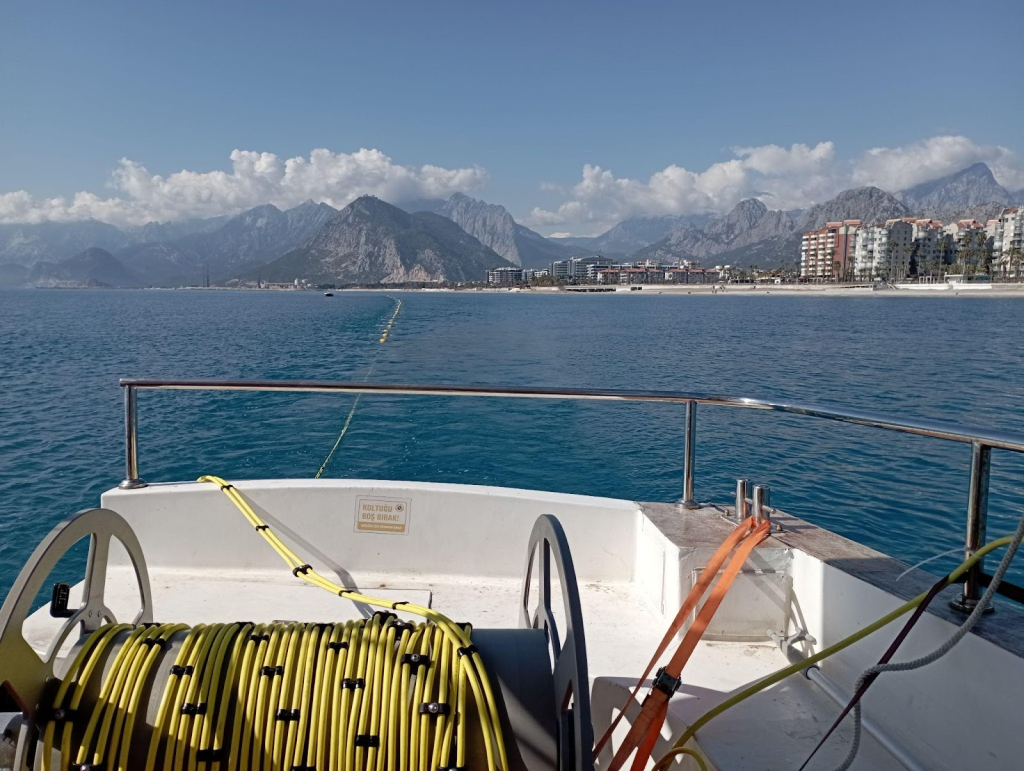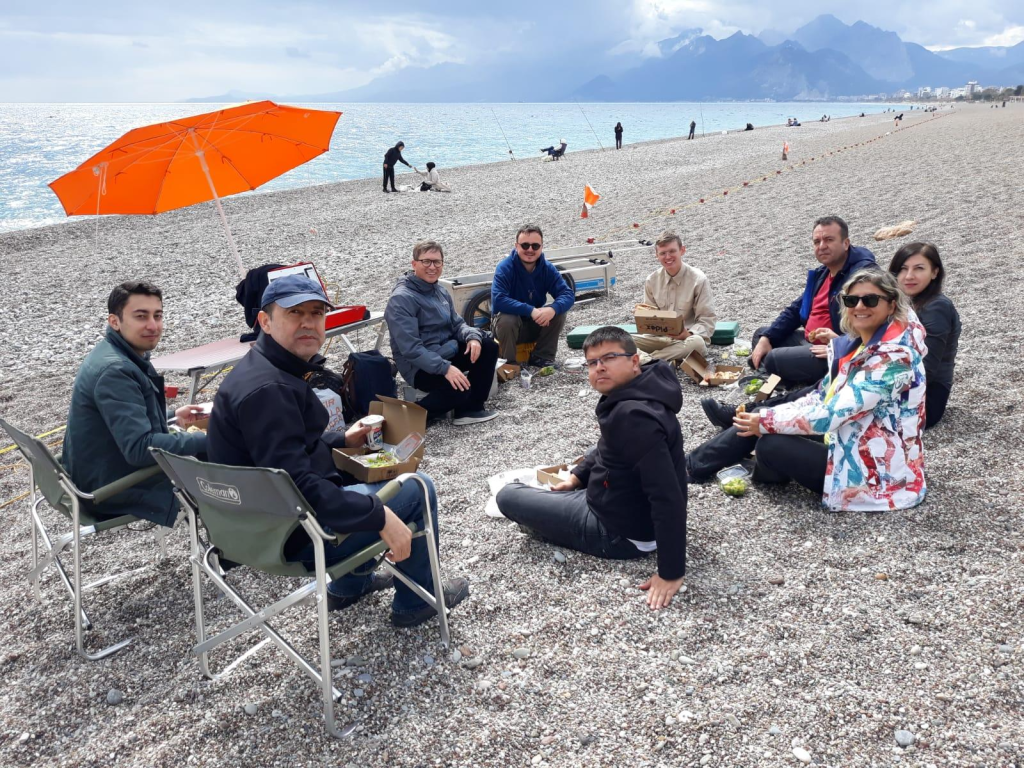The main objective of this STSM was to better understand the onshore-offshore connection of a karst groundwater system in Antalya (Turkey), to engage with local groundwater agencies and to spread awareness of offshore freshened groundwater resources. During my STSM, I was able to test and implement new geophysical techniques to determine coastal aquifer thicknesses of a karst groundwater aquifer and to collect oceanographic data of a submarine groundwater discharge site. Additionally, I was able to establish collaborations, not only with my host institution (the İstanbul Technical University), but more importantly with the local and national water agencies as well as with the Marine and Coastal Management Authority of Antalya.
To determine the thickness of the aquifer system in the city of Antalya we deployed nine geophones to collect ambient noise passive seismic data. The geophones were deployed at different distances to one another to determine surface wave velocities at different frequencies. In total we measured at 8 different stations. Two of the stations were placed right next to existing boreholes to correlate our measurements to well logs. The other 6 stations are located next to existing geoelectric and transient electromagnetic data. The data reveals the thickness of the aquifer unit as well as soil thickness on top of the aquifer and will help to calibrate existing geoelectric and transient electromagnetic data. Although not all data acquired is processed and evaluated, the first results and the data provided from the authorities look very promising. Using the eight ambient noise seismic stations I will be able to create a thickness distribution map of the coastal aquifer. They will also help to verify and complement existing transient electromagnetic and geoelectric data.

Deployment of the geophones behind the vessel
To better constrain the offshore aquifer and volumes of discharging meteoric waters from the seafloor we deployed a CTD and acquired video transects across the seafloor. This material revealed specific regions where outcrops of the karst aquifer on the seafloor indicate submarine groundwater discharge. With the help of a vessel from the Star Diving Academy, we managed to groudtruth hydroacoustic data and verify a distinct change in seafloor morphology and substrate in a region where we expect submarine groundwater discharge from the offshore aquifer. Video transects of the seafloor show outcropping rocks in the location of interest and will now be used to further constrain future sampling campaigns. The acquired CTD data will be used to guide the inversion of offshore geoelectric data to subsequently estimate a freshwater outflow from the seafloor.
During the STSM I was able to present and disseminate the results of a previous research cruise focussing on the offshore groundwater system in Antalya to different stakeholders. The results were presented first at the İstanbul Technical University, at the Antalya Municipality for Marine and Coastal Management and at the local water agency “ASAT” and finally at the National Water Agency “DSI”. The presentations resulted in fruitful discussions on offshore groundwater occurrences in Antalya and further geochemical and oceanographic data collections are planned. I was able to spread awareness for OFG in Antalya and the different authorities offered to provide us with their specific expertise. The Antalya Municipality for Marine and Coastal Management will incorporate a new offshore station into their monthly sampling campaign to provide us with offshore water samples from the identified SGD site in the bay. The National Groundwater Authority “DSI” will sample several onshore wells for us which helps to further evaluate geophysical instruments and approaches for OFG characterisation. The water agencies were especially very interested in our approaches and in further collaborations to investigate the water flow across the land-ocean transition zone.

Turkish colleagues during the field campaign.
A joint manuscript with the İstanbul Technical University and the University of Kocaeli about the onshore-offshore connection of the aquifer in Antalya is in preparation with the title: “Hydrogeophysical investigations in the coastal regions of Antalya: An offshore – onshore approach” to be submitted to Hydrology and Earth System Sciences. The outcome of this STSM was additionally presented at the European Geoscience Union generally assembly in Vienna in April 2024 with the title: “Assessing freshwater plumes, offshore freshened groundwater and the risk of salt intrusions in urbanised karstic groundwater systems using combined resistivity methods”.